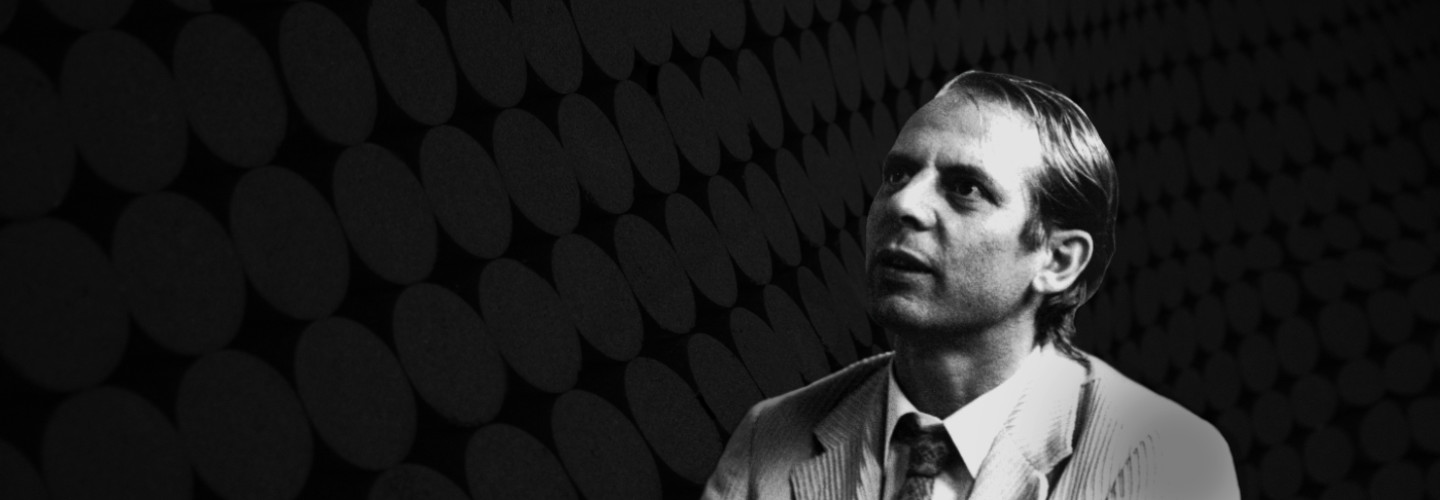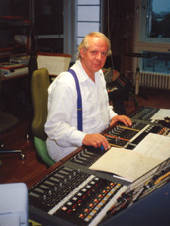

Karlheinz Stockhausen
Mikrophonie II
Duration: 15'
Übersetzer: Richard Toop, Hugh Davies
Text von: Helmut Heissenbüttel
Dedication: Judith Frehm (Pisar) gewidmet
Choir: 6S, 6B
Instrumentation details:
large hammond organ (without Leslie), 4 microphones, 4 ring modulators, 1 tape recorder/player
Stockhausen - Mikrophonie II for choir, Hammond organ or synthesizer, 4 ring-modulators and tape
Translation, reprints and more

Karlheinz Stockhausen
Stockhausen: Mikrophonie 2 for 6s 6b choir, hammond organ (synthesizer), 4 ring modulators and tape - Nr. 17Orchestration: for 6s 6b choir, hammond organ (synthesizer), 4 ring modulators and tape
Type: Partitur
Language: Englisch (Großbritannien)

Karlheinz Stockhausen
Stockhausen: Mikrophonie 2 for 6s 6b choir, hammond organ (synthesizer), 4 ring modulators and tape - Nr. 17Orchestration: for 6s 6b choir, hammond organ (synthesizer), 4 ring modulators and tape
Type: Partitur
Language: Deutsch
Audio preview
Work introduction
After Mikrophonie I for tamtam, 2 microphones, 2 filters and potentiometers, I composed Mikrophonie II. In this work I attempted a synthesis of vocal and electronic music. In Mikrophonie II a transformation of the vocal sounds by means of electronic equipment takes place during the performance. Twelve choir singers (six sopranos and six basses) sit in a semicircle on the stage, with their backs to the public (they could also sit in the middle of the hall, surrounded by the audience). Each group of three singers – three first sopranos, three second sopranos, three first basses and three second basses – has one microphone in front of it. The choir conductor sits facing the public in the centre of the semicircle, and conducts individual layers of the continuously polyphonic musical structure. Beside him sits a timer who indicates the durations of the 33 musical Moments for the choir with corresponding hand movements. Behind the singers, slightly higher is a Hammond organ, with the organist seated facing the singers.
The technical principle of the timbre composition is as follows: the 4 microphones are connected to 4 ring-modulators, and the electrical output of the Hammond organ is also connected to all 4 ring-modulators. In these ring-modulators, the sound of the singers and the notes of the Hammond organ modulate each other in such a way that the input frequencies are suppressed, and the sums and differences of the frequencies come out from the modulators. Completely new sound spectra result from this, with particular harmonic and sub-harmonic colours.
One music modulates the other. Transformed sound only occurs when both – organ and choir – produce sound simultaneously. The sound mixed in the 4 modulators is led to potentiometers whose outputs are connected to 4 loudspeaker-groups. The loudspeakers are placed on the stage behind the choir, so that the original sounds of the choir and the organ are mixed with the modulated sounds that come simultaneously from the loudspeakers.
In the first performance, given in the large concert hall of the Cologne Radio Station, I operated these potentiometers from the hall's balcony. This consisted of opening or closing the four loudspeaker inputs according to indications in the score, and I was able to influence the degree of mixture between natural and transformed sound.
It is important to me that the transformation of the choir sound in Mikrophonie II occurs in different gradations, and that – often simultaneously – untransformed layers are mixed with layers which are transformed to a greater or lesser extent; and that at other times there are transitions from natural to artificial sound, and vice versa. In contrast to pure electronic music, music like Mikrophonie II gives greater possibilities for the composition of relationships in a scale from natural to artificial sound, from familiar (describable) to unfamiliar (indescribable).
One of the most important reasons for pursuing such methods of timbre composition lies – as in all new music, especially electronic – in the desire to compose a unique and unmistakable sound-world for a work, and no longer to maintain the old antithesis which states that in composition the What doesn't matter so much – that is for example, the material (in this case, choir and organ sounds) – but that it is only the How-how one composes with such sounds – that is important. In a work like Mikrophonie II, the What is inseparable from the How: I would never have composed how I did, if the What had not already possessed completely specific and, for this work, suitable properties, which led to definite types of the How.
One must, for example, compose very definite types of structures when using ring-modulators: superimpositions that are as simple as possible, many held notes, layers that do not move too fast and in which all the components are clearly audible, as the ring-modulation creates from simple sound events very thick symmetrical spectra, which can easily lead to a preponderance of noise or to sound articulation, which is too stereotyped.
The notation of the score was altered many times during work on it, particularly during rehearsals, for many interactions between the natural and the transformed sounds were unforeseeable. Finally a score came into being which made it possible for each individual singer and the organist to react to each other, according to the context.
Unusual things were required of the singers. Each one had not only to be able to be able to sing well, but also to be able to invent for himself or herself, melodic, rhythmic and dynamic articulation with different variations, based on my instructions. The organist had to decide from the context when and how much electronic transformation should be produced by changes in dynamic level.
For the text, I used Einfache Grammatische Meditationen from Textbuch 1 [Simple Grammatical Meditations from Textbook 1] by Helmut Reissenbuttel (Walther-Verlag, Olten and Freiburg im Breisgau, 1955), with free additions and interpolations from everyday situations.
Excerpts from tape recordings of my earlier compositions, Gesang der Jünglinge, Momente and Carré, are heard distantly over a fifth loudspeaker through the "sound-windows" of this music.
The first performance was given at a public concert at the Musik der Zeit of the WDR Cologne on June 11th, 1965.
Karlheinz Stockhausen
(translator, Hugh Davies)
London Sinfonietta Voices, 1965
